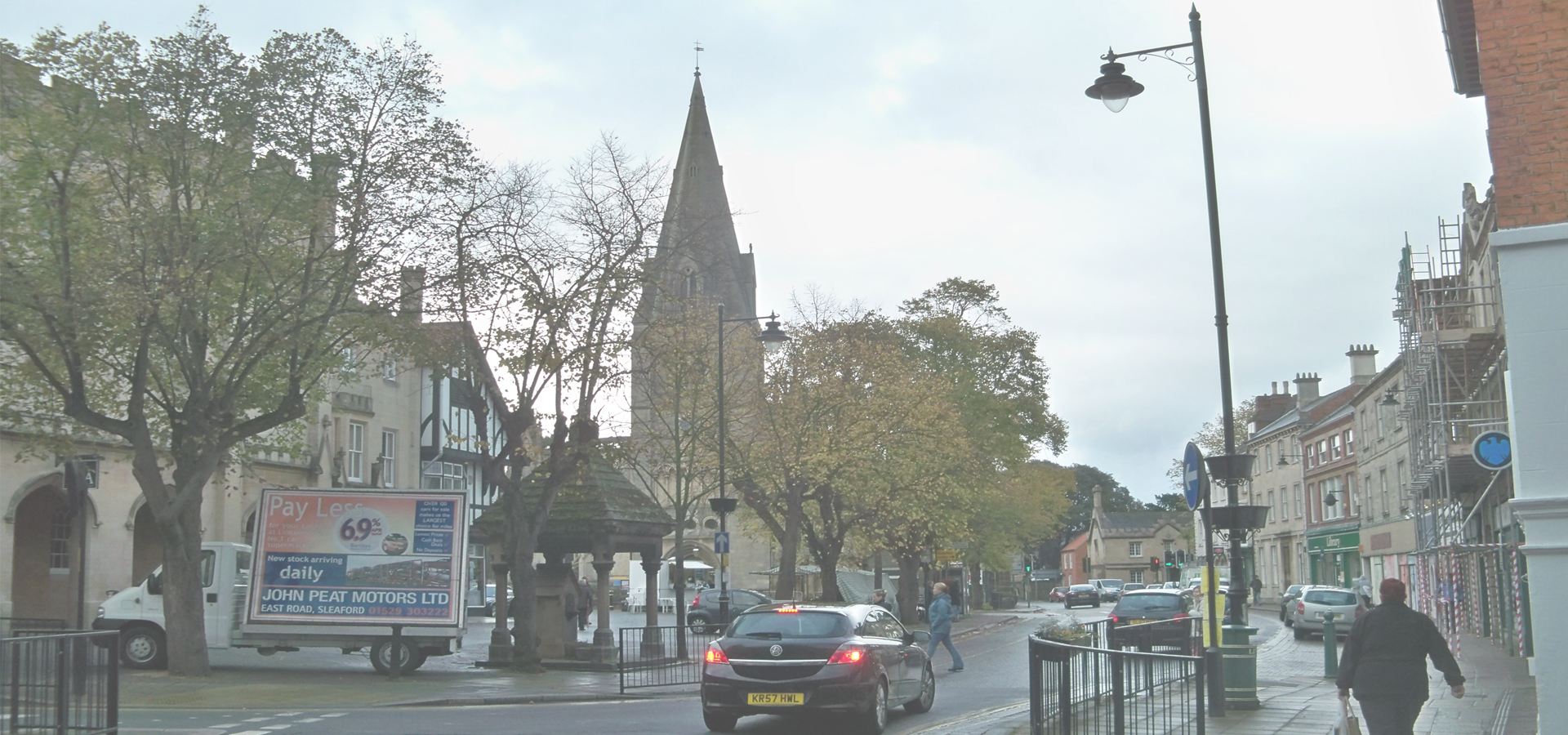Sleaford, Lincolnshire, England, United Kingdom
🏴 Sleaford (historically known as New Sleaford) is a market town and civil parish in the district of North Kesteven, in Lincolnshire, England. The parish include Quarrington to the south-west, Holdingham to the north and Old Sleaford to the east. The town is on the edge of the fertile Fenlands, about 11 miles (18 kilometres) north-east of Grantham, 16 mi (26 km) west of Boston, and 17 mi (27 km) south of Lincoln. It is the largest settlement in the North Kesteven district. Bypassed by the A17 and the A15, it is linked to Lincoln, Newark, Peterborough and King's Lynn. Sleaford railway station is on the Nottingham to Skegness and Peterborough to Lincoln Lines.
The first settlement formed in the Iron Age where a prehistoric track crossed the River Slea. Sleaford was mainly an agricultural town until the 20th century with a cattle market. Seed companies such as Hubbard and Phillips and Sharpes International were established in the late 19th century. The arrival of the railway made the town favourable for malting. In 2011 the commonest occupations were in wholesale and retail trading, health and social care, public administration, defence and manufacturing. Regeneration of the town centre has helped to regenerate the earlier industrial areas, including construction of the National Centre for Craft & Design on an old wharf.
According to a 2010 council report, the public sector was the town's main employer, along with agriculture and manufacturing, including the food processing and agricultural industries. In terms of industry, the most common, based on those working in the sector, are the wholesale and retail trades (including automotive repairs) at 16.9 per cent, health and social care (13.4 per cent), public administration and defence (13.3 per cent) and manufacturing (10.9 per cent), with no other groups representing 10 per cent or more.
Regeneration In 2011 North Kesteven District Council produced a 25-year strategy to regenerate the town. It planned future residential developments and outlined ways to improve the town centre. It suggested developing more parking around the centre and reverting parts of the one-way system, developing southern Southgate and turning Money's Yard into an attraction to link with the National Centre for Craft and Design.
Sleaford, Lincolnshire, England, United Kingdom

Sleaford has a population of over 17,671 people. Sleaford also forms the centre of the wider North Kesteven district which has a population of over 116,915 people.
To set up a UBI Lab for Sleaford see: https://www.ubilabnetwork.org Twitter: https://twitter.com/UBILabNetwork
-
Herbert Walker |
-
William Henry Harrison |
🏴 Architect William Henry Harrison is associated with Sleaford. He was elected a Fellow of the Royal Institute of British Architects (FRIBA) in 1889.
🏴 Newcastle-under-Lyme 53.011
🇮🇪 Portlaoise 53.017
🇷🇺 Petropavlovsk-Kamchatsky 53.024
🏴 Stoke on Trent 53.03
🇳🇱 De Fryske Marren 52.964
🇳🇱 Den Helder 52.957
🇳🇱 Heerenveen 52.957
🏴 Nottingham 52.95
Locations Near: Sleaford -0.3989,52.9769
🏴 Grantham -0.638,52.918 d: 17.3
🏴 Lincoln -0.533,53.217 d: 28.1
🏴 Spalding -0.153,52.786 d: 26.9
🏴 Boston -0.021,52.974 d: 25.3
🏴 Newark on Trent -0.8,53.067 d: 28.6
🏴 Newark-on-Trent -0.809,53.076 d: 29.6
🏴 Peterborough -0.237,52.566 d: 47
🏴 Melton Mowbray -0.886,52.766 d: 40.2
🏴 Gainsborough -0.773,53.402 d: 53.4
Antipodal to: Sleaford 179.601,-52.977
🇳🇿 Dunedin 170.474,-45.884 d: 18988.2
🇳🇿 Christchurch 172.617,-43.517 d: 18844.2
🇳🇿 Canterbury 171.58,-43.543 d: 18811.4
🇳🇿 Wellington 174.767,-41.283 d: 18665.2
🇳🇿 Masterton 175.664,-40.95 d: 18645.3
🇳🇿 Hutt 174.917,-41.217 d: 18660.9
🇳🇿 Lower Hutt 174.917,-41.217 d: 18660.9
🇳🇿 Upper Hutt 175.05,-41.133 d: 18654.5
🇳🇿 Porirua 174.84,-41.131 d: 18650.2
🇳🇿 Invercargill 168.373,-46.413 d: 18928.8